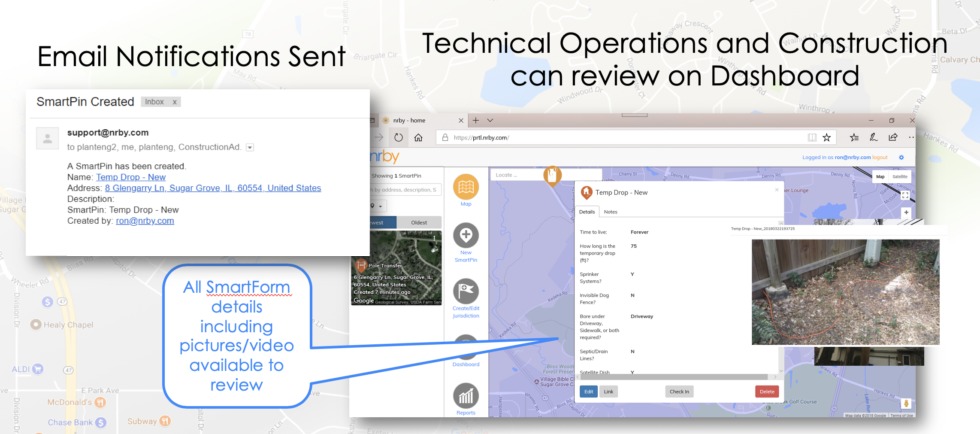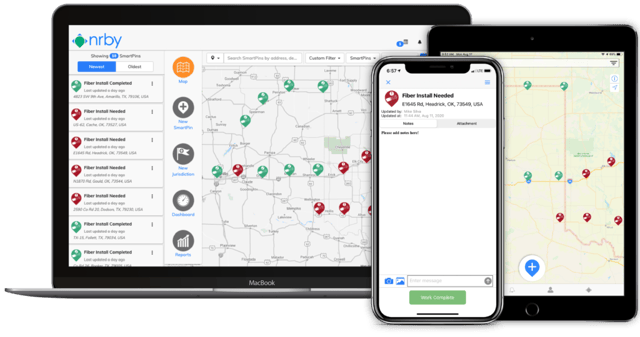I remember one of my first meetings with a cable operator in which we were discussing the merits of technician empowerment and enabling field technician to self-select daily jobs. The reaction from the operator was visceral: “Why would I trust the field guys to do the right thing – they are last ones I trust!”
A lot has changed since that early meeting. The world has become more decentralized. Businesses and organization have flattened their hierarchies. New enterprise collaboration tools are eliminating organizational silos. In essence there has been a dramatic shift of power and control with more transparency of information. Information transparency builds trust within and between organizations. Trust enables people and organizations to achieve more.
Yet, many field operations teams operate in silos, with a chain of command hierarchy and communications process between functional groups. Essentially, the day to day activity of a field technician is very linear, with a sequential schedule controlled by dispatch and ticketing. Over shadowing this day to day activity is a lack of trust in some organizations, which has led to a process burdened with sequential checkpoints and a strict dispatch-controlled work-day. But there is a chicken and egg dilemma trying to migrate to an open and more transparent trusted environment. Without the proper tools and mindset, achieving trust can be elusive and almost impossible.

Empowerment
The first step is empowerment of the field service management technicians. Empowerment achieves several things: First, it puts more ownership and control into the hands of the technician. More ownership and control by the technician results in better quality and better decision making by the technician. Better quality and decision-making improves productivity and business metrics. Improved business metrics can lead to more empowerment and a continuous cycle of improvement.
There are many ways to empower technicians – with tools, with ownership, with measurability, and with accountability. To me, the biggest way is with teams – being a willing participant of a team with clearly defined goals – personal goals and team goals. Teams that have a shared mission can achieve great things. I know this first hand as a serial entrepreneur.

Information Sharing
The next step is information sharing. Information sharing breaks down silos and political boundaries. Information can cross organizational boundaries to improve efficiency, decision-making, communication effectiveness, and speed to problem resolution. All levels of an organization benefit from improved quality and speed of information.
But information has to be purposeful and timely. Who needs to know what, and when do they need it? The beauty with new tools, such as the Nrby Mobile Collaboration Platform, is that it puts information creation and sharing literally in the hands of the field service worker with its mobile app. Technicians can source, update, change status on anything at a location and have it shared in real-time to those that need to know. No phone calls. No telephone tag. No voice mails. And because everything is digital, it can be distributed at near-zero cost, is viewable on a variety of platforms, and can be stored “forever” for audit history and analytics.

Trust
The final step is trust. Trust is not something that can be measured. However, its effectiveness can be measured. Business metrics. Team productivity. Employee satisfaction.
Trust is an intangible that really cannot be measured on its own. I imagine that all of us have experienced work environments or professional relationships built on trust and what a game-changer that can be. Conversely, a work environment filled with mis-trust can is like a cancer – while it may not be visible, it can wreak havoc in the workplace.

The Future is Now
Field Service Management teams now expect a more decentralized, autonomous team structure, with transparent information sharing in real-time.
Fortunately, new mobile apps, like Nrby, will accelerate a shift into the future of field service management operations: More empowerment by technicians, more transparency of information, and ultimately, as a result, more trust within field teams and within the organization.
